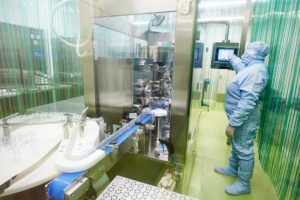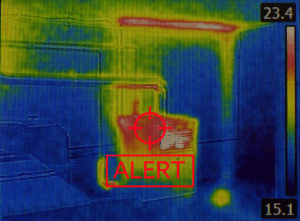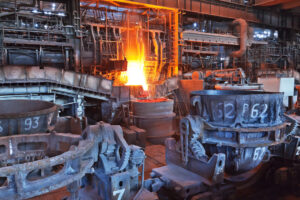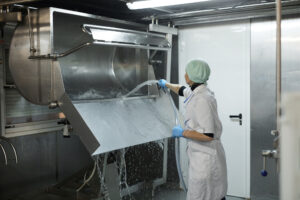Maintaining video quality in harsh industrial environments can be challenging. Between fluctuating temperatures, dust-filled air, intense vibrations, and exposure to the elements, cameras face an uphill battle to deliver reliable, clear footage. Yet, with video monitoring playing an increasingly critical role in safety, security, and operational efficiency, ensuring video quality is essential.
Industrial video monitoring systems do a lot of heavy lifting: enhancing operations, improving processes, improving worker safety, and helping with regulatory compliance. To do all that, video quality is important. You may not need crystal-clear images but you do need to see exactly what’s happening.
In industrial environments, this can be challenging, especially for off-the-shelf cameras that can be destroyed by extreme temperatures, high vibration levels, moisture, debris, and other environmental factors.
Let’s see how you can maintain video quality in industrial environments.
Video Monitoring Challenges in Industrial Environments
Harsh industrial environments can significantly impact the performance of video equipment. Here are some key challenges that can affect video quality:
- Temperature Extremes: Video equipment exposed to extreme heat or cold can suffer from thermal fluctuations that lead to malfunction or image degradation. For instance, heat can cause image sensors to produce noise, while cold can lead to condensation issues.
- Vibration and Shock: Heavy machinery and constant movement can cause vibrations that affect camera stability. This can result in blurry images, potential physical damage to the camera, or cameras falling apart internally over time.
- Dust and Debris: Dust and debris can obstruct lenses, leading to reduced visibility and image clarity. Additionally, particulate matter can infiltrate camera housing, causing internal damage.
- Moisture and Corrosion: Humidity, rain, or accidental spills can lead to moisture buildup inside cameras, causing electrical failures or corrosion over time.
- Lighting Conditions: Harsh environments often feature inconsistent lighting, which can challenge cameras’ ability to capture clear images, particularly in low-light situations.
Understanding the challenges of industrial video monitoring is only the first step—fortunately, there are proven strategies to overcome these hurdles and maintain high-quality footage, even in the toughest settings. By combining the right technology, proactive maintenance, and protective measures, it’s possible to preserve video clarity and ensure your systems stay resilient over time.
How to Maintain Video Quality in the Harshest Industrial Environments
Keeping video quality high in the harshest industrial environments requires more than standard equipment—it demands a strategic approach tailored to withstand extreme conditions. From selecting the right industrial cameras to proper mounting and routine maintenance, there are key steps that make a big difference.
1. Choose the Right Cameras
Forget off-the-shelf cameras; they don’t last in industrial environments and the image quality is less than ideal. Look for cameras specifically designed for industrial use, featuring robust enclosures that protect against dust and moisture.
In many environments, industrial cameras are sufficient, but others may require special considerations like explosion rating or stainless steel based on facility needs and industry regulations.
2. Use Fixed Lenses
In high-vibration environments, varifocal lenses just don’t cut it. Vibrations can rattle a varifocal lens enough that they require constant adjustments, and industrial facilities don’t have time for that kind of unnecessary maintenance. Opticom Tech’s high vibration and high impact cameras are built with fixed lenses so your camera stays focused on what you need to monitor.
3. Use Robust Mounting Solutions
Proper camera mounting is crucial in industrial settings. Use vibration-resistant mounts that can absorb shock and stabilize cameras in motion. This will help prevent image blur and ensure consistent footage quality. Plus, if your camera gets hit (for example by a board), the mount can take the brunt of the damage and save the camera.
4. Regular Maintenance and Cleaning
Regular camera maintenance is key to preserving video quality. Dust and debris can accumulate on lenses and sensors, impacting image clarity. Schedule routine cleaning of camera lens covers and have a process for rotating out cameras for maintenance.
5. Invest in Proper Lighting
In many industrial settings, natural light can be inconsistent. Invest in additional lighting solutions, such as LED lights, to ensure adequate illumination for your cameras. This will help improve image quality, particularly in low-light conditions.
Opticom Cameras: Video Quality in Harsh Environments
For more than five decades, Opticom Tech has been empowering mine operators, plant managers, sawmill operators, and others with the right video monitoring solutions. More than a camera seller, we are a real partner that understands the needs and challenges of those who operate in industrial settings.
This is why we’ll never sell you just any video monitoring system. All of our sales go through a consultation process, where we look at your specific needs so we can recommend the solution that fits them best.
Let’s get you set up with the video monitoring system your organization needs. Start here and talk to one of our experts.







